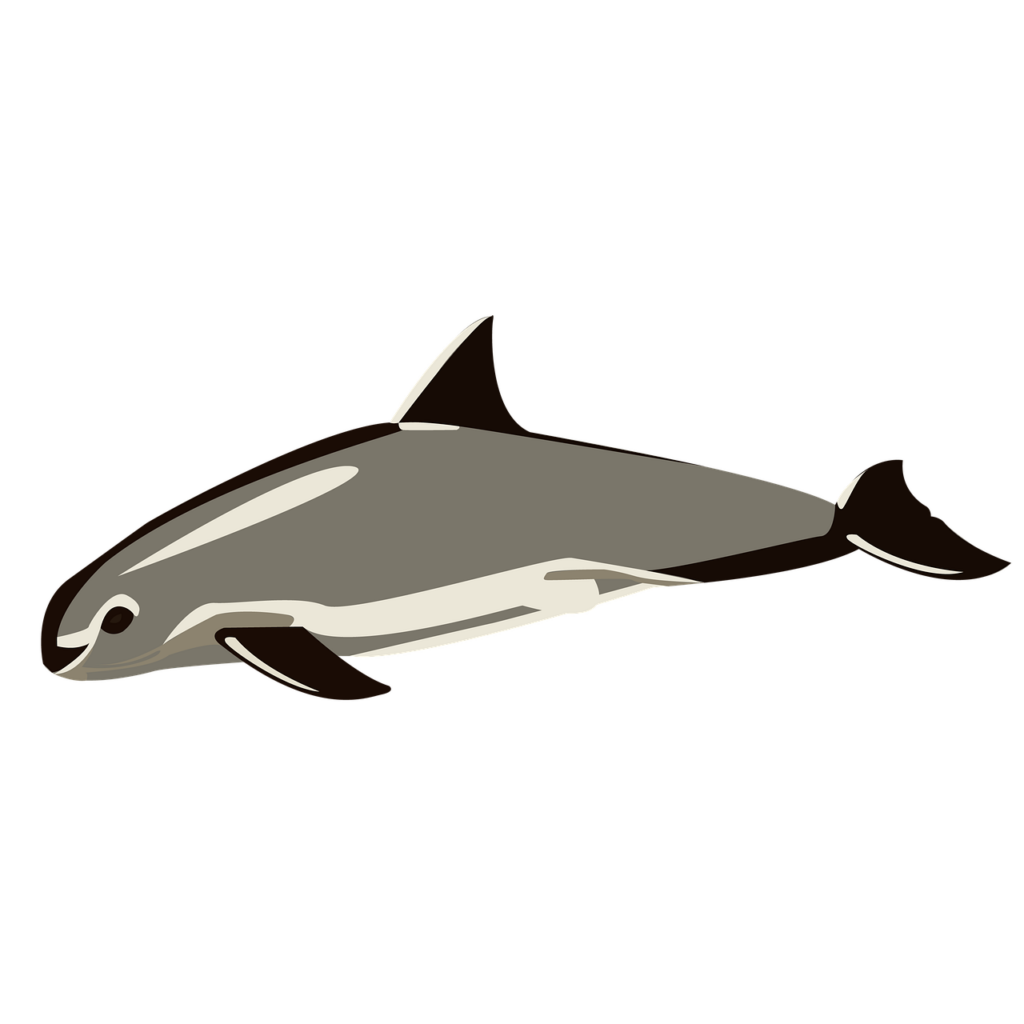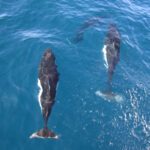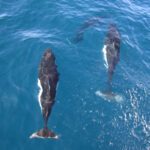The vaquita, the world’s smallest porpoise, is on the brink of extinction. Its population has rapidly plummeted due to illegal fishing practices, mainly targeting the totoaba fish. Gillnets used by poachers are the biggest killer, trapping and snaring vaquitas in their “ghost nets”.
Miguel, a local fisherman, experienced first-hand the plight of the vaquita. He was filled with remorse after accidentally catching one in his net. He was determined to make up for his mistake and protect them from further harm. He joined forces with environmental organizations and government officials to fight illegal fishing.
Miguel’s story illustrates the responsibility each of us holds for preserving biodiversity. It is essential that we come together and hold accountable those who contribute to the tragic decline of these unique creatures, before it is too late.
Key Takeaways
- The vaquita, a small porpoise species found in the Gulf of California, is on the brink of extinction due to illegal fishing practices.
- The main culprits behind the vaquita’s decline are illegal fishing operations that target another endangered species, the totoaba fish, for its valuable swim bladder.
- The swim bladder of the totoaba fish is highly sought after in Asian markets, where it is believed to have medicinal properties.
- Despite efforts by the Mexican government to crack down on illegal fishing, the vaquita population continues to decline rapidly.
- The vaquita’s decline is also exacerbated by the use of gillnets, which are indiscriminate and often trap and drown the porpoises.
- Conservation organizations and scientists are working to save the vaquita through initiatives such as captive breeding programs and the removal of gillnets from the vaquita’s habitat.
- International cooperation and stricter enforcement of fishing regulations are crucial in saving the vaquita from extinction.
- The loss of the vaquita would not only be a tragedy in terms of biodiversity, but it would also have negative ecological impacts on the Gulf of California ecosystem.
Background on Vaquita
Vaquita, the world’s tiniest cetacean, is a critically endangered porpoise in the Gulf of California. With fewer than 10 individuals, urgent steps are needed to prevent them from extinction.
Vaquitas have many threats causing their numbers to drop. Illegal fishing, in particular gillnets, is a huge issue. Gillnets are meant for catching fish and shrimp, but they also ensnare vaquitas, usually resulting in death. Even though efforts to ban gillnet fishing in their habitat exist, enforcement is difficult.
The demand for totoaba fish swim bladders in Asian markets is another reason. They are thought of as a delicacy and thought to have healing properties. This has caused an illicit trade that unintentionally harms vaquitas, catching them in the same gillnets used for totoaba.
To protect them, several ideas have been suggested. Stricter enforcement of gillnet bans is needed to stop illegal fishing. This means more monitoring and surveillance of fishing vessels in the area.
Local communities should be encouraged to use selective fishing gear or fishery management plans. This will reduce accidental vaquita bycatch.
Governments must work together to stop the illegal trade of totoaba swim bladders. Laws need to be enforced and smuggling networks must be broken.
Raising awareness about the vaquitas’ plight is important too. Education campaigns should inform people of the value of preserving this species and discourage demand for illegal wildlife products.
These measures can help the vaquitas survive. But, fast action is required to change their declining population trend and ensure a future where these amazing creatures live in the Gulf of California.
The Threats to Vaquita Population

The Vaquita Population is facing significant threats that put their survival at risk. These threats include illegal fishing practices, such as gillnet fishing, which is the primary cause of their decline. The use of gillnets leads to accidental entanglement and drowning of Vaquita, as they are unable to escape. The Vaquita also face competition for resources from other fishing activities, resulting in a decreased food supply. Pollution, including chemical contaminants and marine debris, further impact their habitat and health. The illegal wildlife trade poses another threat, as Vaquita are sometimes captured and sold. Climate change and habitat degradation exacerbate these challenges, making conservation efforts even more crucial. It is essential to address these multifaceted threats comprehensively and urgently to protect the Vaquita Population from extinction.
- Illegal fishing practices, particularly gillnet fishing, cause accidental entanglement and drowning.
- Competition for resources and overfishing result in a reduced food supply.
- Pollution from chemical contaminants and marine debris negatively impact their habitat and health.
- The illegal wildlife trade contributes to the decline of the Vaquita Population.
- Climate change and habitat degradation further exacerbate the threats they face.
- Comprehensive conservation efforts are necessary to address these multifaceted challenges effectively.
Furthermore, it is important to note that the decline of the Vaquita Population is not only a scientific concern but also a humanitarian issue. Thousands of people rely on fishing for their livelihoods in the region where Vaquita inhabit. By protecting the Vaquita, we also safeguard the livelihoods and well-being of these communities.
A heart-wrenching true story exemplifies the impact of these threats on the Vaquita Population. Last year, a fisherman discovered a lifeless Vaquita entangled in a gillnet. Despite his efforts to rescue the animal, it was too late. This tragic incident serves as a stark reminder of the urgent need to address the threats facing Vaquita and take immediate action to protect this endangered species.
If illegal fishing had a mascot, it would be the Grim Reaper, and the vaquita is unfortunately just one of its many victims.
Illegal Fishing Practices
Illegal fishing practices are a major threat to the vaquita population. Fishermen who engage in these practices not only endanger the species, but also disrupt marine ecosystems. We need to understand how serious this is and take urgent action.
Here’s a table of common illegal fishing practices:
| Practice | Description |
|---|---|
| 1. Gillnetting | Nets used that trap and drown vaquitas and other marine life. |
| 2. Trawling | Pulling nets across the seabed, destroying vaquita habitats. |
| 3. Poaching | Illegally catching and selling vaquitas for organs or pets. |
| 4. Overfishing | Reducing fish populations that vaquitas rely on. |
Other dangerous fishing methods like dynamite fishing and longlines with thousands of hooks add even more threats to the vaquitas.
Pro Tip: Support sustainable fishing and raise awareness about the harm caused by illegal fishing. This will help protect the vaquitas and our oceans for future generations.
Bycatch in Fishing Nets
Bycatch in fishing nets is a major threat to Vaquitas, leading to their decline. Gillnets, commonly used in the Gulf of California, are dangerous as they trap creatures indiscriminately. Vaquitas’ low reproductive rate makes this issue even worse, as even a few deaths have long-term consequences.
Illegal fishing practices exacerbate bycatch, as fishermen prioritize money over conservation. Acoustic deterrent devices are being used to reduce bycatch, but they are not enough. International collaborations and regulations are needed to fight the threat to Vaquitas.
Raising awareness is also crucial. Educating communities on sustainable fishing, and promoting responsible seafood consumption, can create positive change and protect these unique marine species.
The death of a Vaquita in 2019 serves as a reminder of the need for action. This tragic event emphasizes the importance of effective measures against bycatch in fishing nets.
Conservation Efforts

Conservation initiatives for the preservation of the vaquita, commonly known as the “porpoise of the gulf,” have been implemented globally. These programs aim to protect the species from the threats it faces, such as accidental entanglement in fishing gear and illegal fishing practices targeting the totoaba fish.
- International partnerships have been formed to combat the illegal wildlife trade, which poses a significant threat to the vaquita.
- Conservation organizations are working closely with local communities to raise awareness about the importance of protecting the vaquita and its habitat.
- Efforts have been made to enforce fishing regulations and encourage sustainable fishing practices in the vaquita’s range.
- Technological advancements, such as the use of acoustic monitoring systems and satellite tracking, have been employed to gather data on vaquita populations and their movements.
- Translocation efforts have been explored as a potential conservation strategy, with individuals being relocated to safer areas where they can thrive.
- Collaborative research projects are underway to better understand the vaquita’s biology, behavior, and ecological requirements, informing targeted conservation measures.
Additionally, innovative initiatives have been launched to engage local communities in conservation efforts, recognizing their vital role in protecting the vaquita. These efforts involve education programs, alternative livelihood opportunities for fishermen, and sustainable tourism ventures that promote environmental stewardship. Overall, conservation efforts for the vaquita represent a collaborative and multi-faceted approach towards its survival.
A true fact: The World Wildlife Fund (WWF) has been actively involved in supporting vaquita conservation initiatives in the Gulf of California.
Government regulations and initiatives: killing the vaquita, one red tape at a time.
Government Regulations and Initiatives
Government regulations and initiatives are essential for successful conservation. Look at some of the most important ones:
- The National Parks Act creates protected areas that promote biodiversity and sustainable tourism.
- The Wildlife Protection Act defends endangered species from exploitation and illegal trade.
- The Pollution Control Laws make sure industries don’t produce too much environmental pollution.
- The Carbon Emission Caps limit greenhouse gas emissions, helping to fight climate change and foster clean energy use.
Governments also encourage businesses to go green through tax breaks and grants.
Tip: Stay informed about government regulations and initiatives to make sure your conservation work is effective.
International Collaborations
International collaborations are essential for saving the planet. Countries come together to share knowledge, resources, and expertise, leading to more efficient conservation strategies.
These collaborations come in many forms, such as the Convention on International Trade in Endangered Species of Wild Fauna and Flora (CITES) and The International Union for Conservation of Nature (IUCN). CITES involves 183 countries and focuses on sustainable trade regulations and protection of endangered species. The IUCN involves 170+ countries and focuses on nature conservation and sustainable development.
International collaborations aren’t just limited to government agencies or organizations. Many grassroots movements and citizen-led initiatives also contribute to global conservation efforts. By engaging local communities and individuals from various countries, these collaborations ensure a bottom-up approach towards sustainable conservation actions.
The United Nations’ Sustainable Development Goals include a target specifically dedicated to biodiversity conservation. This demonstrates the recognition of the importance of international collaborations in achieving global environmental sustainability.
So don’t settle for just wearing a “Save the Planet” t-shirt. Join an environmental organization and help make a real difference!
The Role of Environmental Organizations
Environmental orgs are key in guarding the Vaquita, an endangered porpoise species. To save them, these orgs use their resources to raise awareness and advocate for stronger laws. They collaborate with governments, scientists, and local communities. Research is conducted on the Vaquita’s habitat and threats to build effective strategies. Public outreach and educational campaigns seek to engage people and motivate them to protect the Vaquita. Sustainable fishing practices are promoted to stop accidental entanglement in fishing gear.
The environmental orgs worked hard to get a protected marine reserve for the Vaquita. This reserve is a safe haven, free from human interference. Despite the odds, these orgs keep fighting for nature.
The Vaquita’s survival is in dire straits – like someone hit the mute button!
Current Status of Vaquita Population
The vaquita, a small porpoise found only in the Gulf of California, is in a critical state. Numbers have drastically declined due to unsustainable fishing. Conservation measures are being taken, but with only 10 individuals estimated, urgent action is needed!
Gillnet use by fishermen, and poaching by crime syndicates, are major threats. Gillnets are banned, but high demand creates a lucrative black market.
Unique technologies help with conservation. Acoustic monitoring and drone surveillance help track and protect these creatures.
Help the vaquita by choosing sustainable seafood. Don’t let their tale become fishy – keep swimming in the right direction for conservation!
Frequently Asked Questions
Q: Who kills Vaquita?
A: Vaquitas are primarily killed as a result of bycatch, accidental capture in fishing nets meant for other species. The major threat to vaquita populations is gillnet fishing for the illegal trade in totoaba fish bladder.
Q: How are vaquitas affected by gillnet fishing for totoaba?
A: Gillnet fishing for totoaba has led to the drastic decline in vaquita populations. Vaquitas often get entangled in these nets and drown. The demand for totoaba swim bladders, especially in the Asian black market, drives this illegal fishing activity.
Q: Are there any other threats to vaquitas?
A: Apart from gillnet fishing, vaquitas face threats such as habitat degradation, pollution, and climate change. These factors also contribute to the decline in their population.
Q: What is being done to protect vaquitas?
A: Several conservation measures have been implemented to protect vaquitas. These include prohibiting gillnet fishing in their habitat, increasing enforcement against illegal fishing, and promoting alternative livelihoods for local communities dependent on fishing.
Q: How successful have conservation efforts been so far?
A: Despite conservation efforts, vaquita populations continue to decline. The small remaining population is highly endangered, and urgent action is needed to prevent their extinction.
Q: Can vaquitas be saved?
A: While the situation is critical, there is still hope for saving vaquitas. Stronger enforcement of fishing bans, international cooperation, and raising awareness about the vaquita’s plight are crucial in their conservation.
Conclusion
The need to protect the Vaquita is urgent. Their numbers are falling fast, so we must act now! We must make it harder to break fishing rules in their habitat. Tighter monitoring and bigger penalties will stop people from harming these sea creatures. Sustainable fishing can also help keep their population balanced.
Raising awareness about the Vaquita is key. Programs can show us how incredible they are. They can also help people understand how important it is to protect their home. We all need to feel responsible for their future.
Government, organizations, and scientists must work together. They must share resources and knowledge. Doing this could lead to better solutions. Joint research and action plans will help us make the biggest impact and bring long-term success.
References





